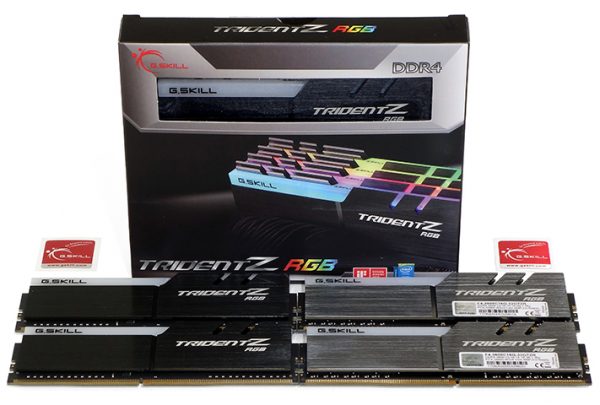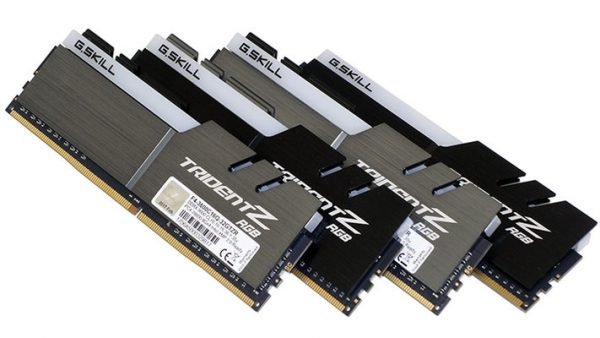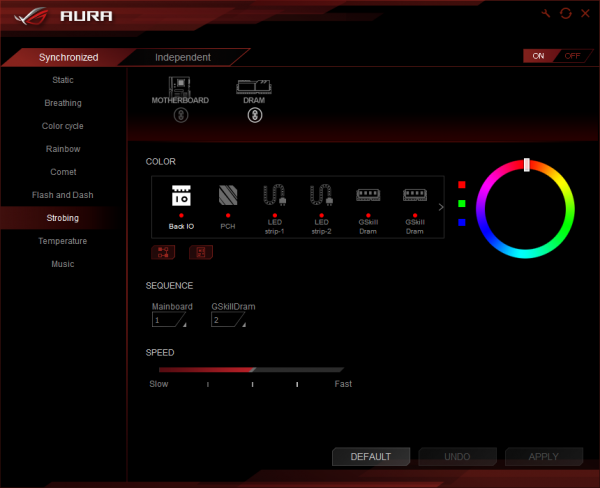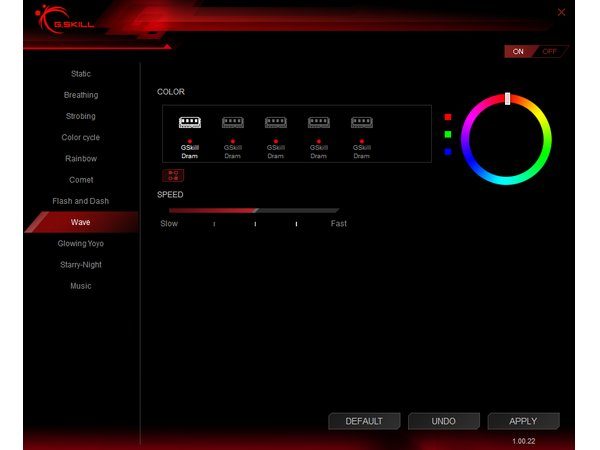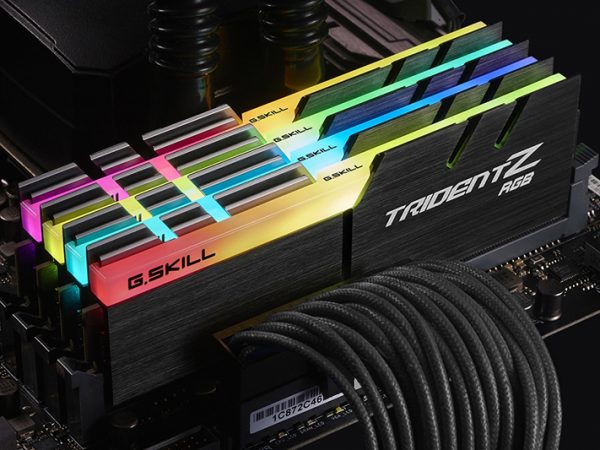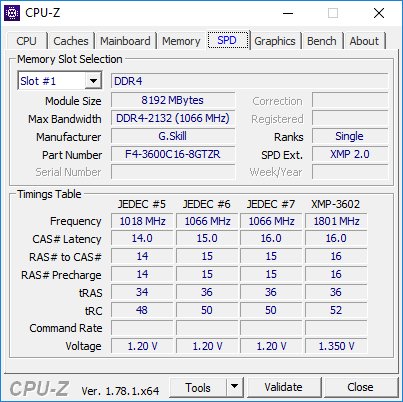I’m not much for long product names, but Trident Z RGB doesn’t seem too excessive. Add the DDR4-3600 to it, and it’s getting slightly lengthy. Oh, and there’s the CAS 16 rating. Fortunately, G.Skill makes its model numbers a little easier to read than many of its competitors, as the “4” stands for DDR4, 3600 is the data rate, C16 is the latency, the Q means quad-DIMM, 32 is the gigabytes of capacity, and GTZ is the style. Unfortunately, R stands for RGB on its black-and-gray heat spreaders, where G.Skill uses the same letter on other modules to denote the color red. And with that, model F4-3600C16Q-32GTZR is born.
So much for the decoder ring. On to the details.
Just any CAS 16 timings wouldn’t do for G.Skill, as the firm understands 16-16-16 is quicker than the 16-18-18 latency found on certain competing modules. It’s even a hair quicker than the classic DDR3-1600 CAS 7 standard, since (quick math) 3200/16*7=1575. Remember that latency is quoted in cycles, and that cycle time is the inverse of frequency: Faster cycles occur in less time.
Enthusiast are also aware that four-DIMM sets can be used in both quad-channel and dual-channel configuration. Oddly, the box includes two dual-DIMM packages, each with its own case badge. One side of the module is black, the other gray, and the black side faces outward on most motherboards.
The white part is of course a plastic light diffuser for the onboard RGB LEDs, which G.Skill said can be controlled by Asus’ Aura application. A quick test of that claim proved that the lights of each module can be controlled individually, or they can be grouped, and that patterns such as Rainbow will assign various colors to the four LEDs of an individual module.
G.Skill’s own version of the software, Trident Z RGB Control, is currently in beta. Tested on a non-Asus motherboard, the Static, Breathing, and Strobing options dimmed the LEDs entirely (see solutions in reader comments below). Color cycle, Rainbow, Comet, Flash and Dash, Wave, Glowing Yoyo, Starry-Night, and Music all functioned as advertised.
Most motherboards will boot this DDR4-3600 CAS 16 at DDR4-2133 CAS 15 prior to initiating the motherboard’s XMP setting. After that, the modules will boot at DDR4-3600, but only on boards and processors that can reach DDR4-3600. We recommend reading reviews of your board to determine its limits before choosing high-speed memory.
